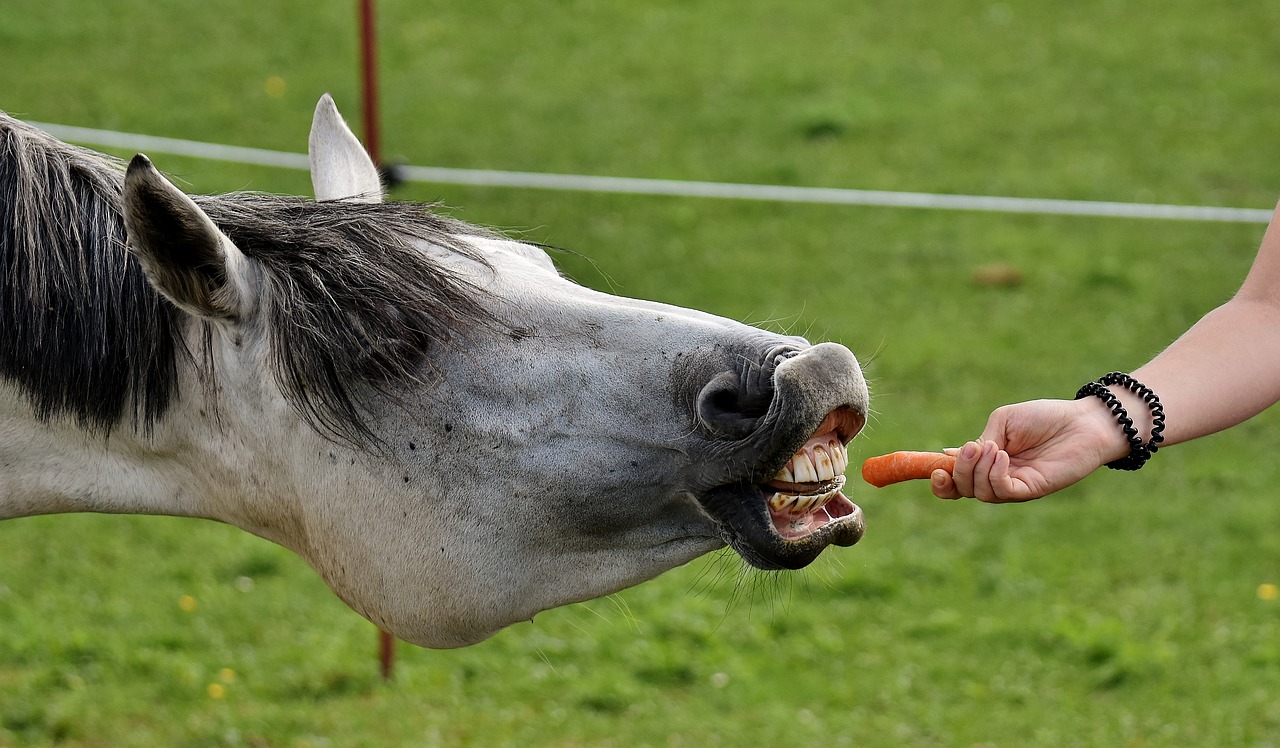
by Juliet M. Getty, Ph.D.
When we can offer a safe, caring home to a severely neglected horse, everyone in the horse world cheers. If you have recently adopted a rescue horse, let me first commend you for your actions. Saving a horse that is in desperate need of care and nursing him back to health can be one of the most gratifying experiences a horse owner can have. But you must be committed to giving him a lot of time and attention. The transition period is critical. He'll need to be moved in and out of pasture throughout the day, fed hay nearly every couple of hours, and given frequent supplemental meals until he gets to where he can hold his own.
If your horse is very thin due to starvation, you will want to proceed slowly and with caution, giving his body a chance to adjust to change with each step. Some horses are in such poor condition they are unable to eat. In this extreme situation, your veterinarian will use a stomach tube to feed the horse. This is a short term procedure with the goal of getting your horse interested in eating again.
Ulcers can complicate the rehabilitation process. Retired race horses almost invariably have ulcers. Your veterinarian may prescribe an ulcer medication, but this can only be used for a month or so. The three long term components of healing an ulcer are: chewing on hay or pasture at all times, plenty of water, and reduction in stress.
Your ultimate goal is to allow your rescued horse to graze freely, as much as he wants, on hay and/or pasture. You'll want his forage to include a legume such as clover or alfalfa. But take your time if you can't just put him out on pasture right away if he's been severely deprived. No matter how gratifying the sight of him grazing 24/7 will be, you must allow time for his digestive tract to adjust to the influx of food. The microbial population in his hind gut is not adequate for fiber digestion; too much, too soon and he may colic or founder.
Here is my recommendation for an 1100 lb horse (his normal weight):
Give him a probiotic, at a double dose, every day for approximately one month; then reduce the dosage to a maintenance level.
Start with 1 lb of grass hay every two hours, or pasture grazing for 30 minutes with an hour break in between. At night, leave him with 4 lbs of hay, plenty of water, and a plain, white salt block along with granulated salt, offered free-choice.
After 3 days, increase the amount of hay to 2 lbs per every two hours and give him 8 lbs of hay at night.
By the end of two weeks, he should be able to have hay available free-choice or graze on pasture 24/7. Be sure he has enough at night to last him throughout the night. There should be some hay left over in the morning.
Starting at week three, add alfalfa to his hay ration. Start with 1 lb per day for 3 days, and add one more pound every three days, until you reach a total of 8 to 10 lbs per day. If you’re not able to obtain alfalfa hay, get hay cubes. Break them into small pieces and let them soak for a few minutes. Feed them as a snack throughout the day.
Also starting at week three, you'll want to begin feeding him 6 small meals each day. You can use a commercial senior or performance feed that contains 14-16% protein, at least 18% fiber, and at least 8% fat. Each meal should contain:
- 4 cups feed (weighs approximately 1 lb or .5 kg)
- 1/4 cup (60 ml) flaxseed meal (stabilized, commercial product is best)
- 200 IU Vitamin E (you can get capsules in your local pharmacy)
- Probiotic (double dose , spread over 6 meals)
- 500 mg of Vitamin C
Gradually decrease the number of meals, every two weeks, but increase the amount of feed in each meal so that by the end of one month, in addition to a full ration of forage, you are providing two to three meals per day, with no more than 4 lbs of feed per meal. Maintain supplements and if your horse is older than 16, provide additional vitamin C.
The upside to the time and attention, in addition to seeing your horse regain his health and vibrancy, is that you will get to know your new horse very well, and together you will enjoy many good years ahead.
This article originally appeared on Getty Equine Nutrition and is published here with permission.
Find more informative articles in our section on Health & Education.

































